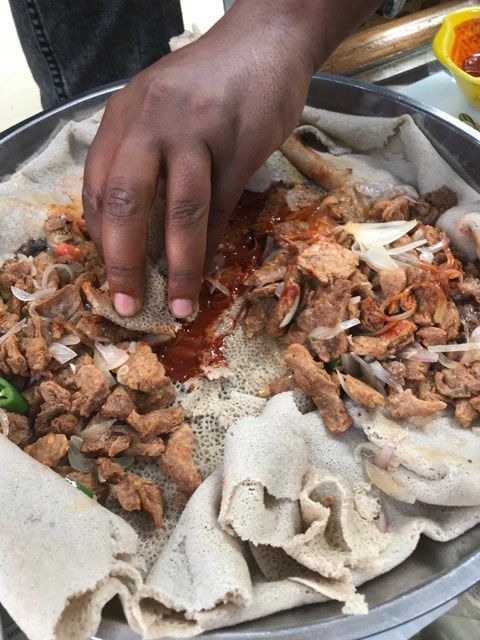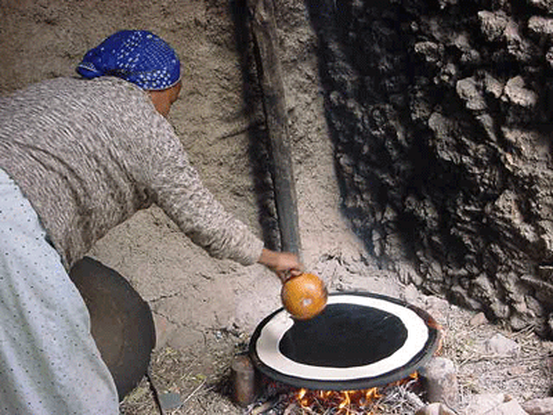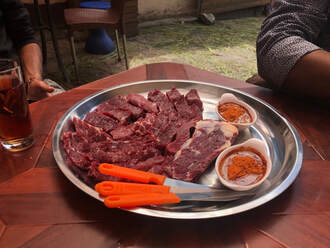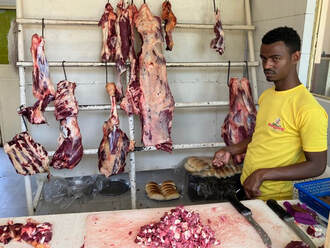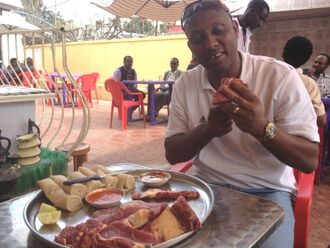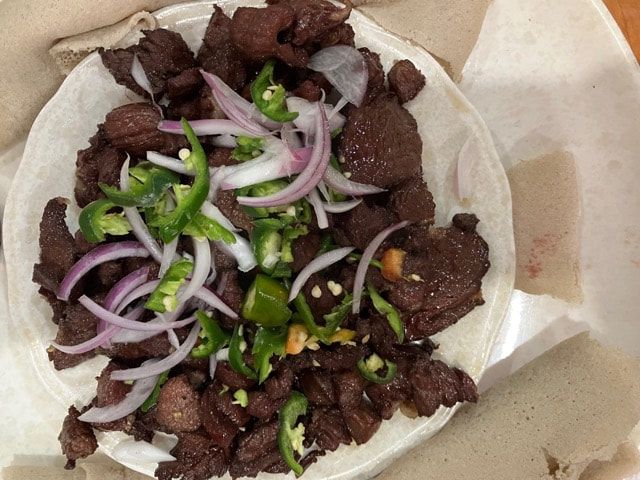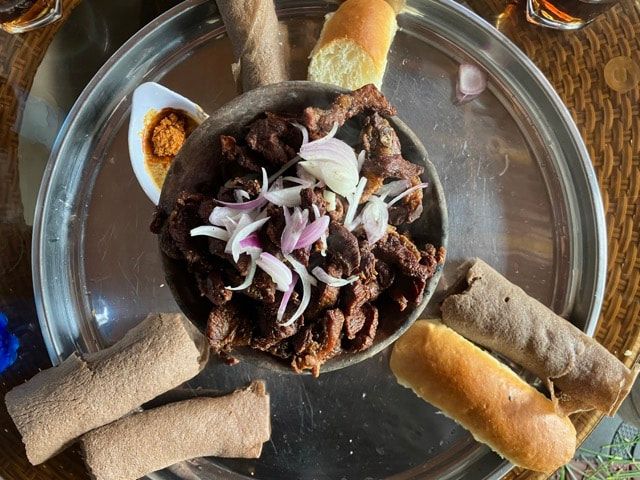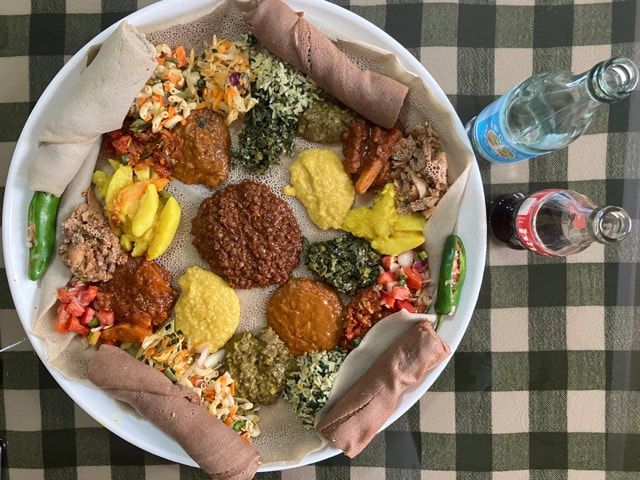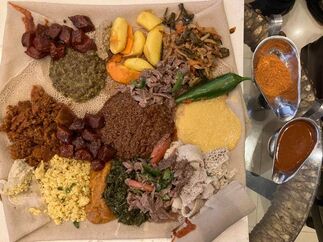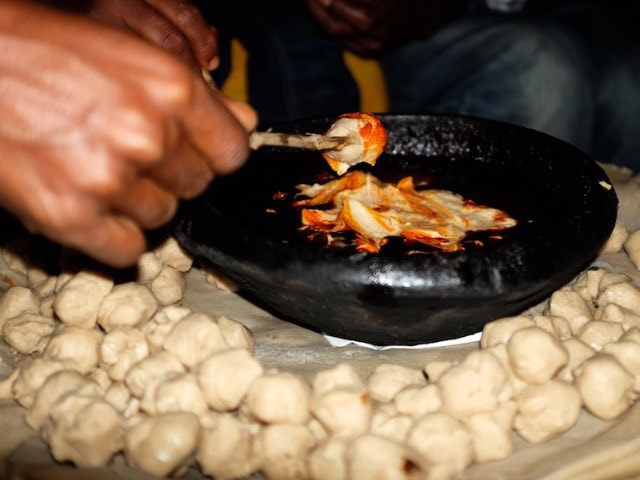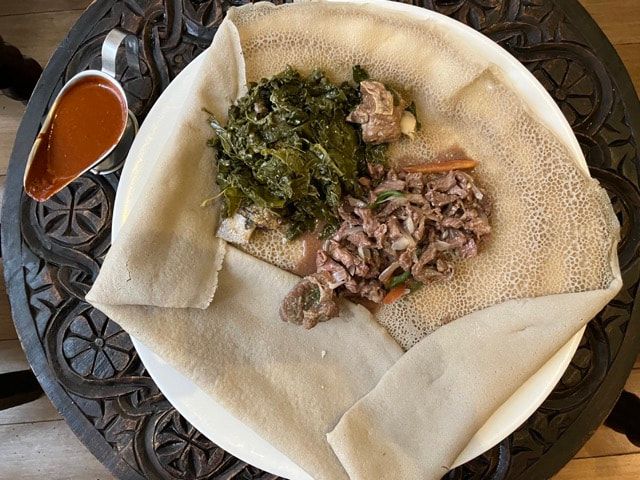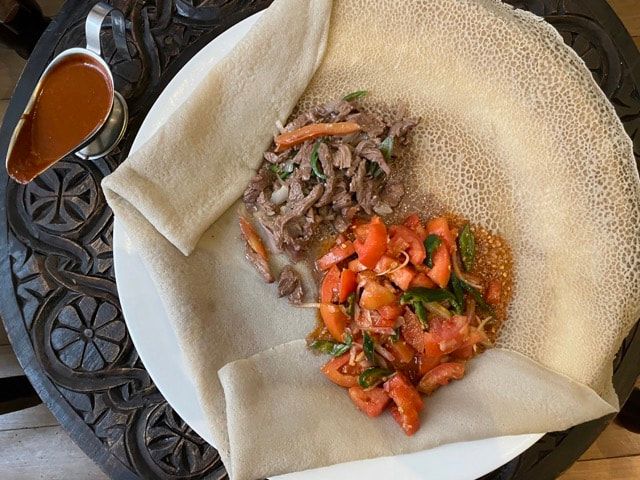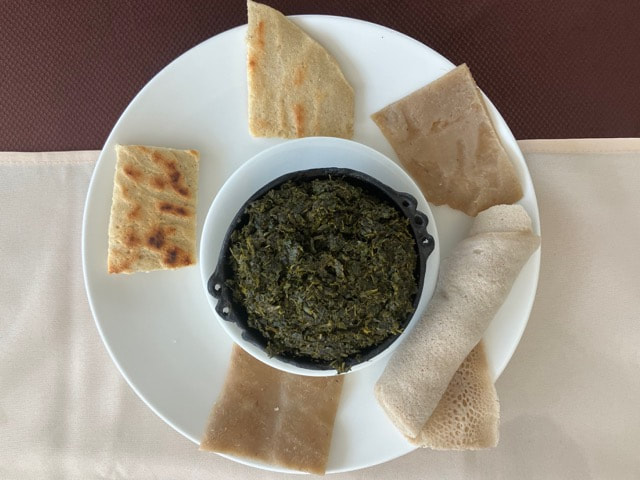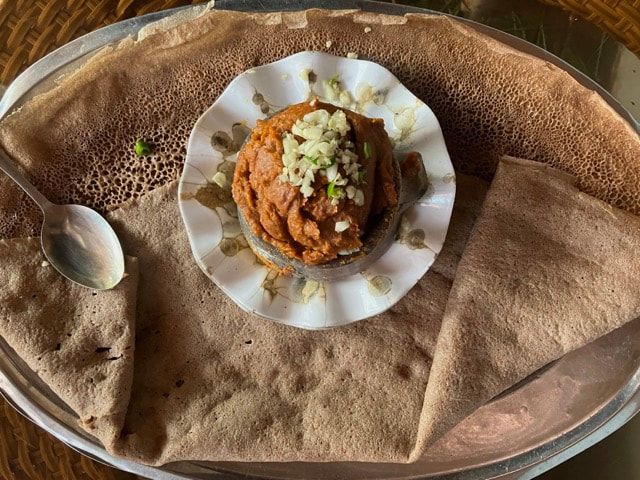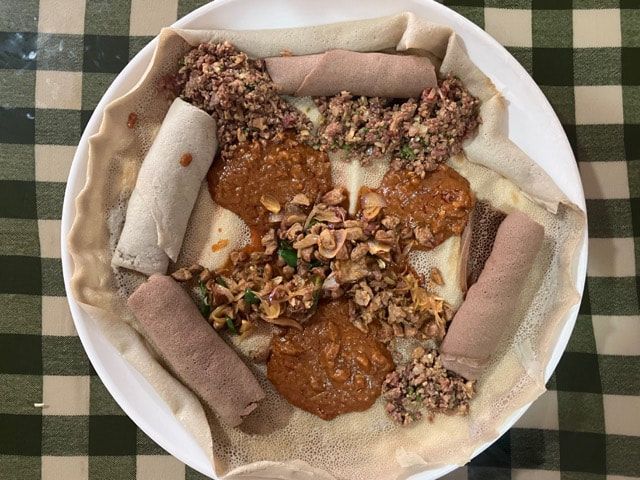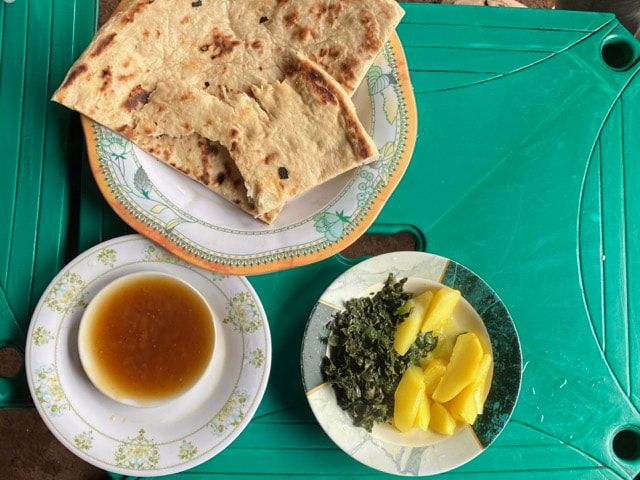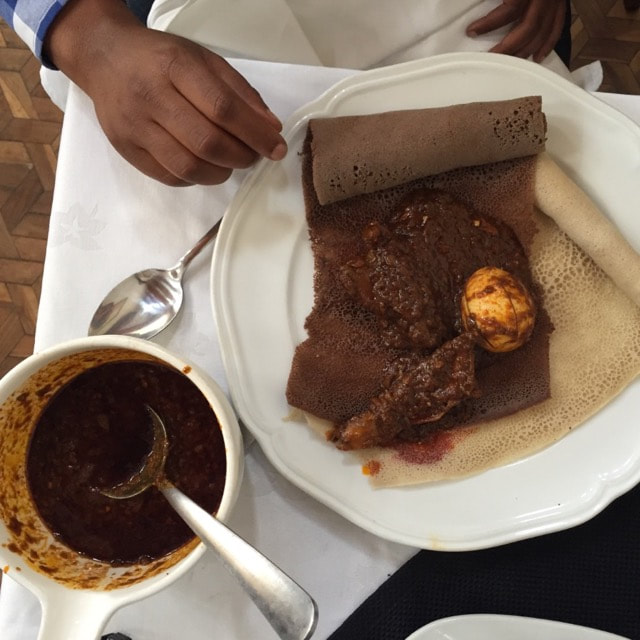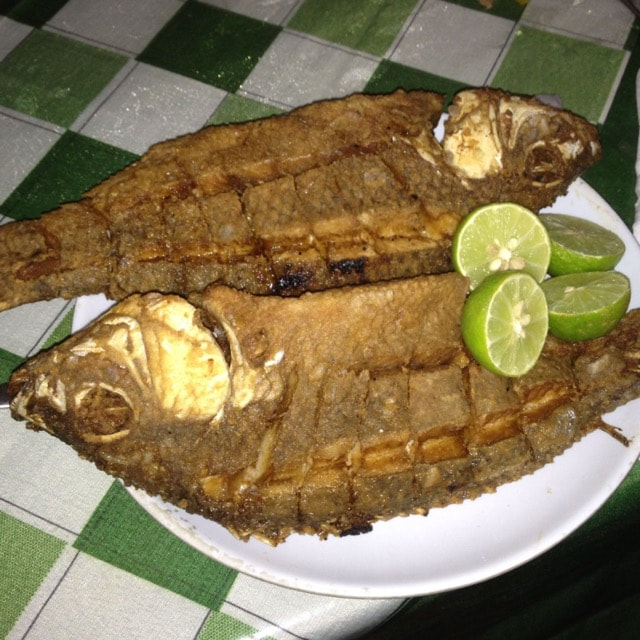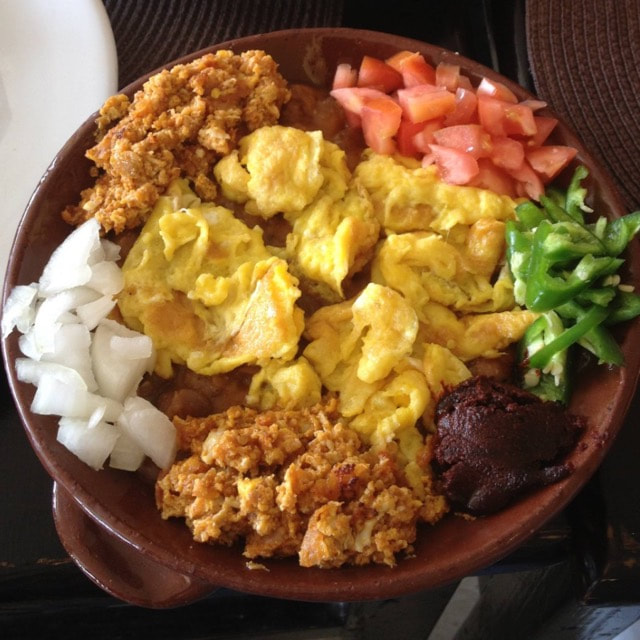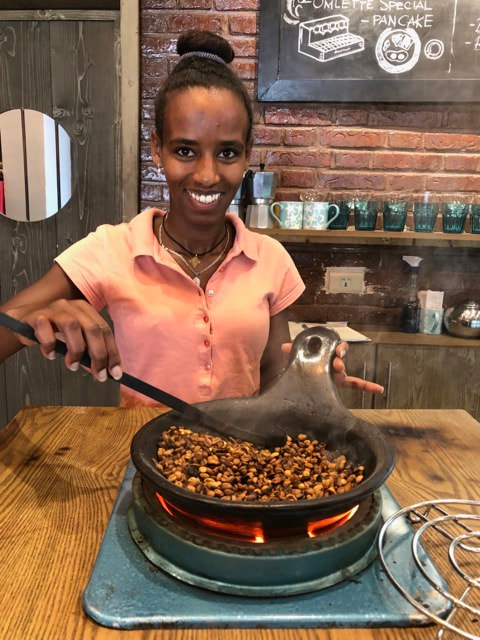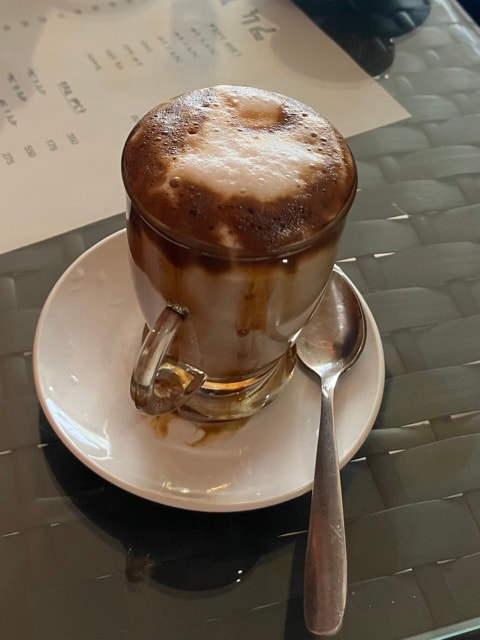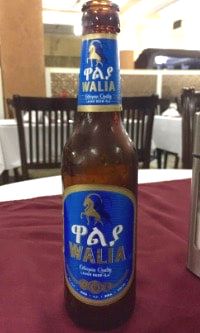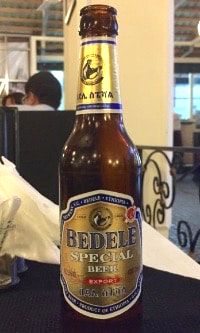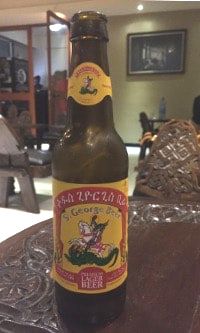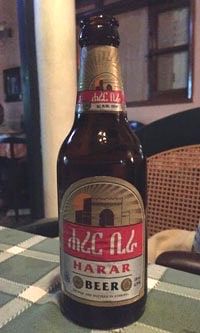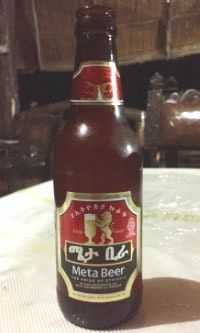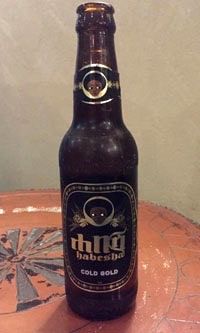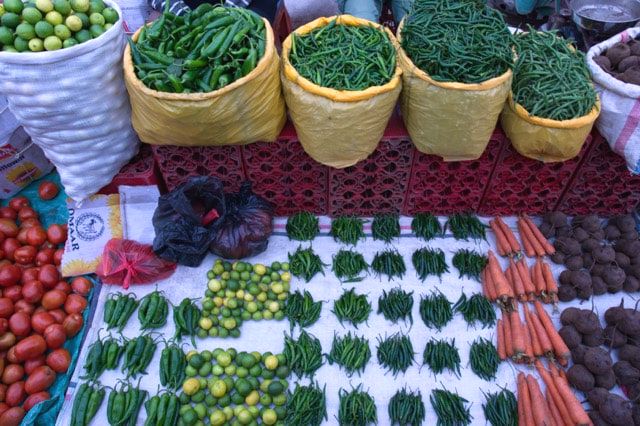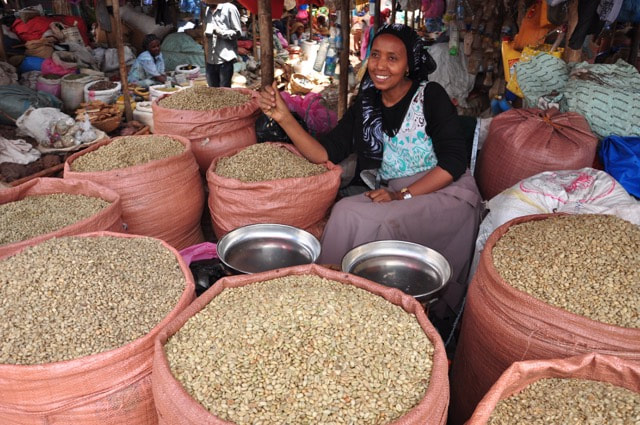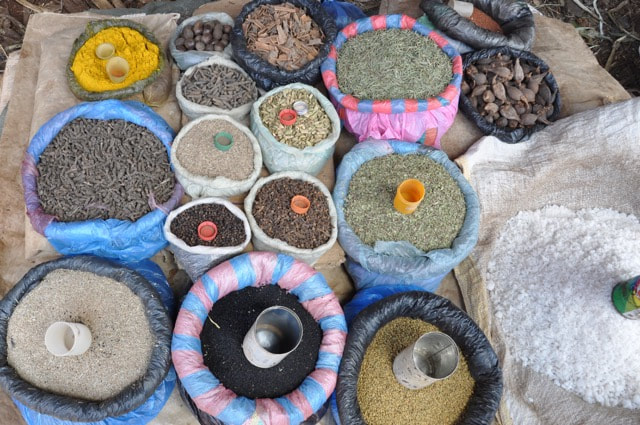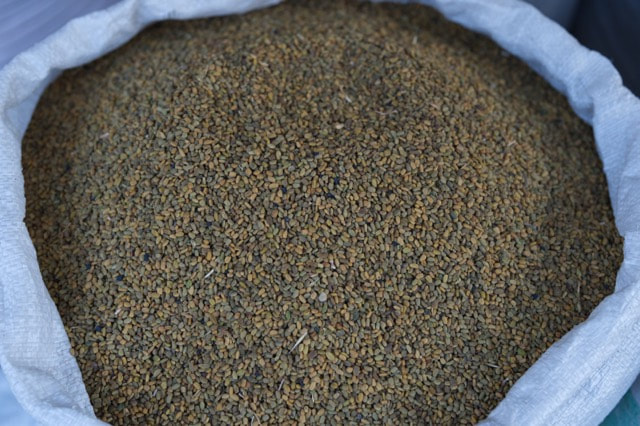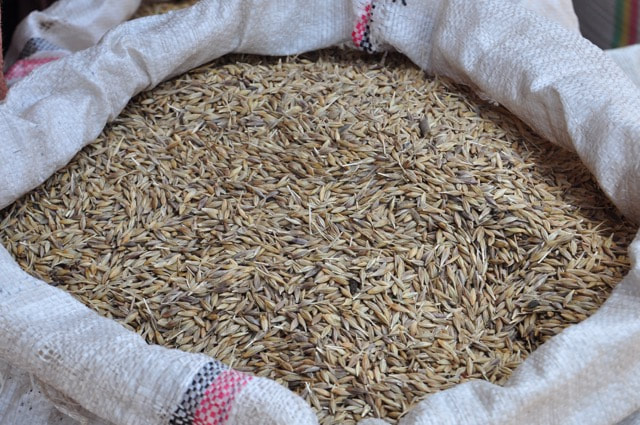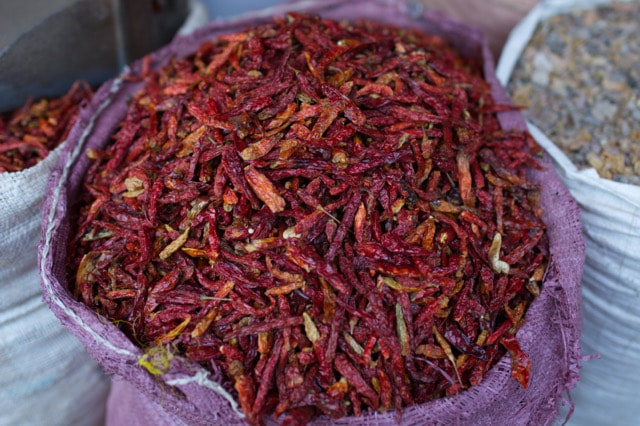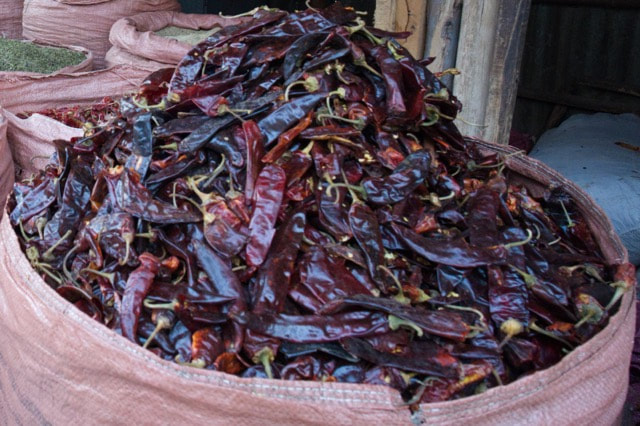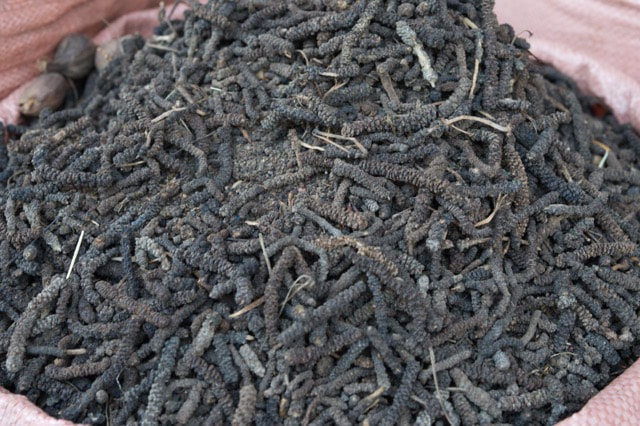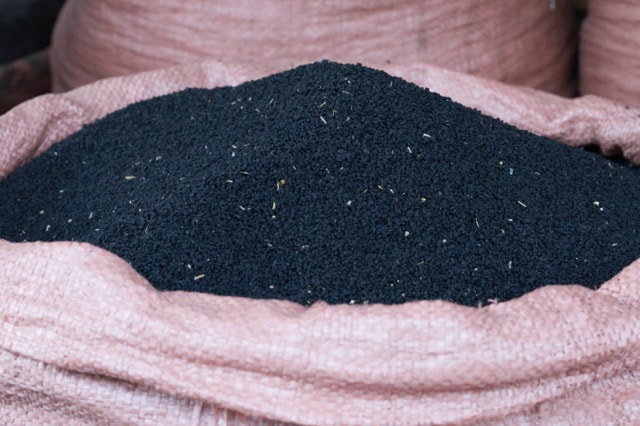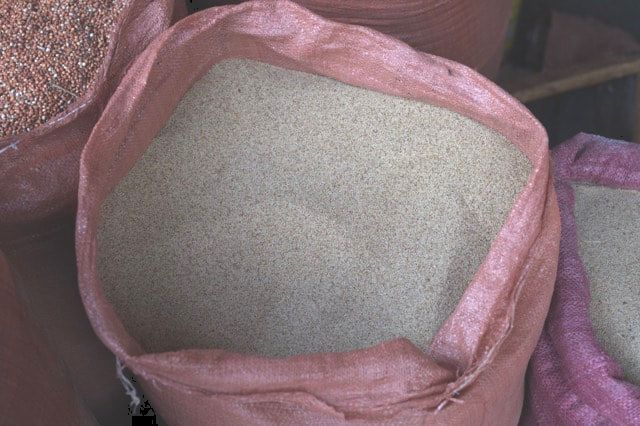Ethiopian Cuisine
Home to the African Union, various United Nations departments, and foreign NGOs, Addis Ababa is very much an international city and visitors can enjoy all types of cuisine. Outside the capital dining options are more limited. The major tourist destinations usually have good western dishes - most often pastas and grilled meats, but in the more remote areas, injera with various Ethiopian dishes are the main option.
Bottled mineral water, sparkling and still, is available throughout the country. In most towns fresh-squeezed juices and smoothies are available. Home to a number of breweries, Ethiopia boasts some very good beers. For a unique drink, you should try "tej," a, home-made honey wine found throughout the country.
Bottled mineral water, sparkling and still, is available throughout the country. In most towns fresh-squeezed juices and smoothies are available. Home to a number of breweries, Ethiopia boasts some very good beers. For a unique drink, you should try "tej," a, home-made honey wine found throughout the country.
|
Injera and Wot
Most Ethiopian dishes are served alongside injera, a flat, soft, and spongy bread made from teff, wheat, barley or millet. Depending on the type of grain used the flavor and color will vary but generally injera has a tangy, almost sour taste. Different "wots" will be served with injera. Wot is a traditional stew consisting of different vegetables or meat cooked in a spicy sauce and is served on top of a rolled out piece of injera along with other meat and vegetable dishes.
|
Mealtime Etiquette
|
Raw Meat!?
For many Ethiopians fresh raw meat is a delicacy and speciality restaurants will have a butcher counter where you can select your cut. Kitfo, hand chopped raw beef or goat mixed with spices and sometimes gomen (greens) and ayeb (Ethiopian cheese), is a specialty dish at many restaurants. Tire siga, "raw beef", is served with berebere (red pepper spice blend) or awaze, a concoction of red pepper and butter. Gored-gored is lightly cooked cubed beef that has been seasoned with spiced butter. Look for restaurants called "siga bet" specializing in fresh beef, or "fiyel bet" specializing in fresh goat. If you prefer eating cooked meat any restaurant will gladly put your dish on the grill and serve it as "tibs."
Ethiopian Dishes
The land of coffee
|
Ethiopian coffee is legendary in reputation and tradition. According to folklore, it was discovered by an Ethiopian goat-herder named Kaldi, who noticed that when his goats ate the berries of a certain bush, they became more energetic. This prompted Kaldi to test out the beans himself, and when he felt the vitality that the beans gave him, he instantly knew that he had made an important discovery.
Today, coffee beans are one of Ethiopia's major exports - constituting around 30% of annual export revenue. Almost 1/4 of the population depends on the coffee trade as its source of income. Farmers have cultivated coffee using the same methods for hundreds of years and the work is still done almost exclusively by hand. Ethiopia grows a few different of varieties of coffee: Sidamo, Harar, Limu, and Yirgacheffe, all named after the region where they are grown. |
|
Wine and beer
Ethiopian wine has traditionally been too sweet for foreign tastes, but in the last decade investors have identified Ethiopia as an ideal location to grow grapes and the quality of local wines has increase dramatically. Acacia and Rift Valley wineries are among the best. Ethiopia has long produced excellent beers and several have caught the attention of international brewers. Below are several you might encounter:
|
At the market
Be sure to take time to visit a market, especially in the towns and villages outside Addis Ababa. As you wander past row after row of fragrant spices and fresh, organic produce you will understand why Ethiopian cuisine is so flavorful. (Many of the smaller town markets are only fully open one day per week so be sure to check.)

